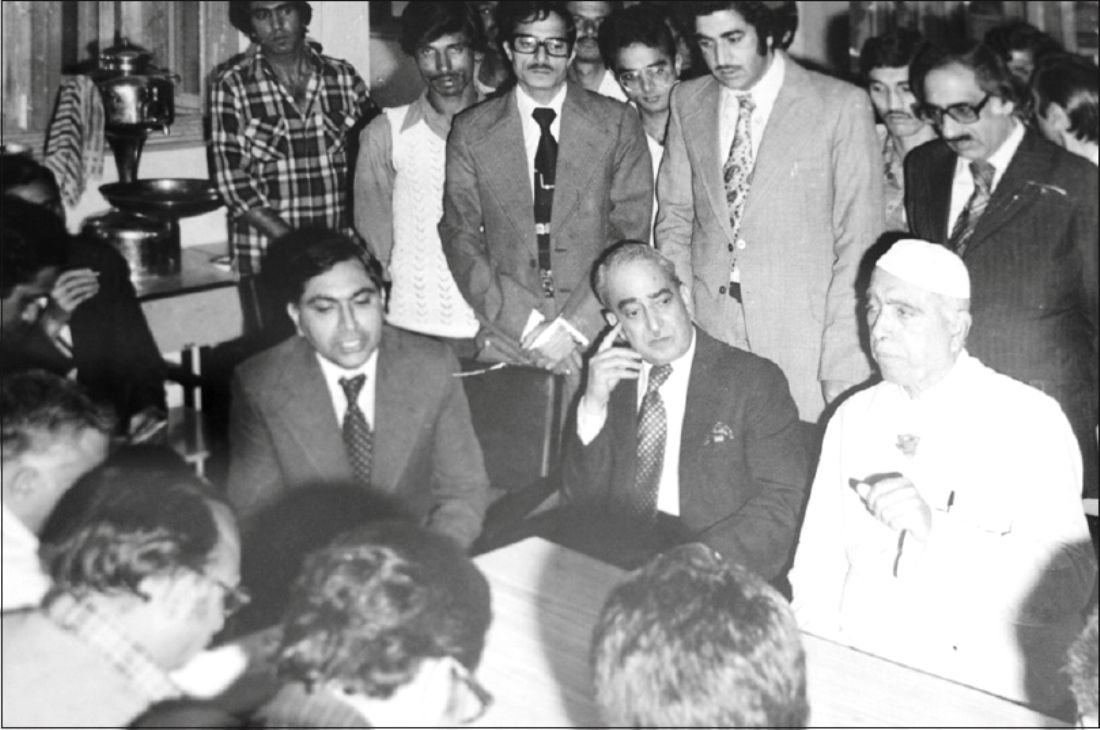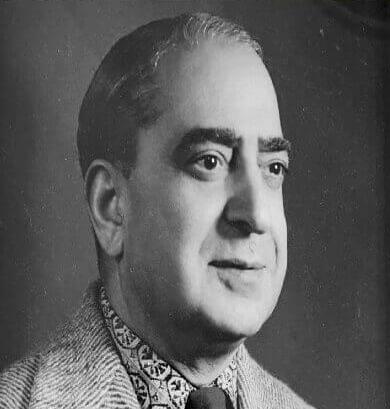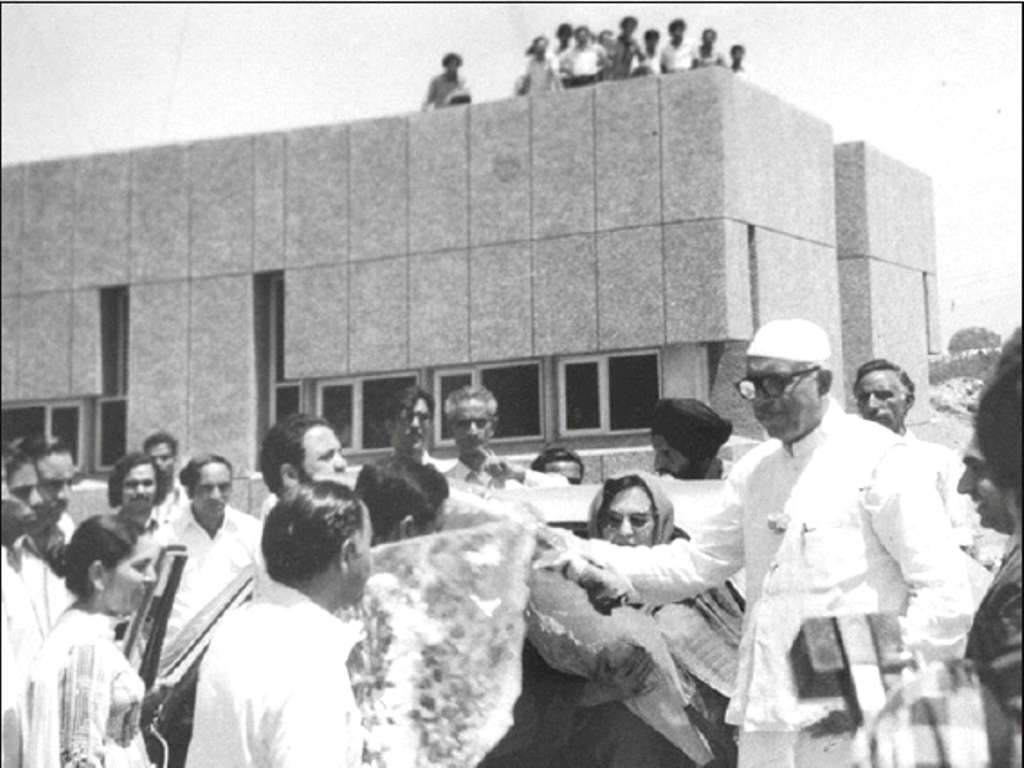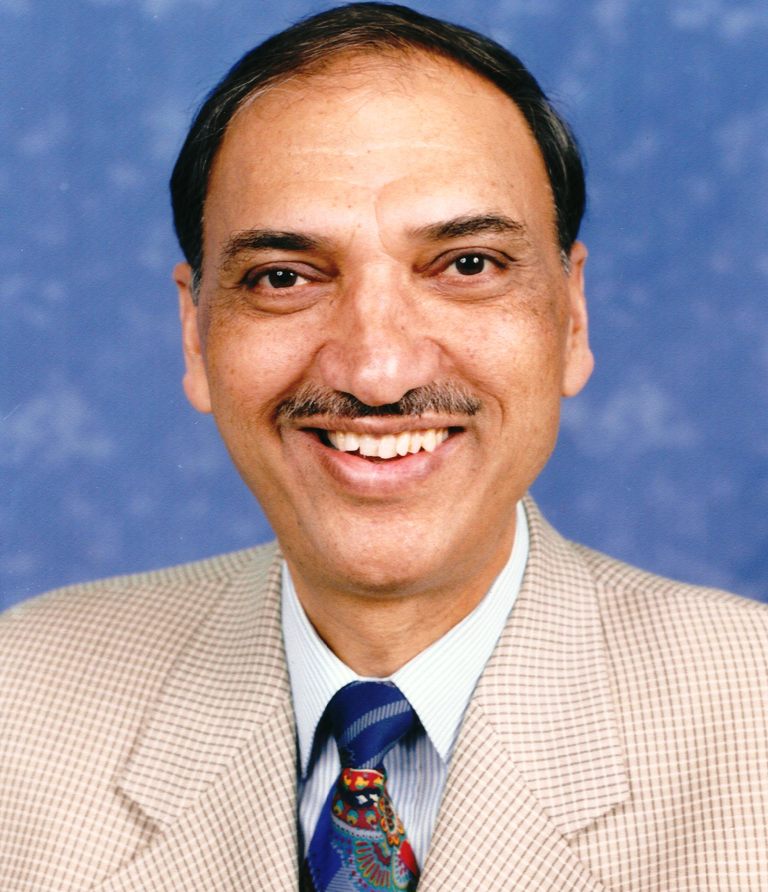One of Kashmir’s top gastroenterologists and researchers who once headed the SKIMS, Dr M Sultan Khuroo explains why Dr Ali M Jan was a legend and ahead of his times

Prof (Dr) Ali Mohammad Jan (September 3, 1914 – October 31, 1988) was a legend for Kashmir in his lifetime. Ali Jan, as he was popularly known was a household name.
I knew Jan Sahib as a medical student, resident doctor, practising physician, consultant and Head Gastroenterology, Dean Medical Faculty and Director Sher-e-Kashmir Institute of Medical Sciences (SKIMS). I watched him closely in all these capacities, and, more importantly, as a human being.
To become a legend, one needs to have qualities like wisdom, hard work, dedication, focused attention, honesty, discipline and above all the art of availing the opportunities which come your way.
Student Days
As a child, I had heard his name from my parents. During my early days in medical school, I saw him several times in the corridors and in meetings. He always was well dressed and moved with grace and style. He lacked flamboyancy and stays focused, quiet and spoke little “in a low tone”. He kept to himself and was not distracted by anything around him.
Soon I came to know him as a teacher on bedside presentations and theory classes. He always ensured he completes his teaching assignments and was extremely focused. His class and bedside sessions had no “non-sense” in them and all would have a smooth ending with a clear lesson to students. There was no sensationalism in his presentations and the sessions were “not the ones” all the backbenchers would like to attend. However, those of us who wanted to learn always attended his sessions and took pleasure in them.
House Surgeon
After I completed my graduation (MBBS), I had the opportunity to work with Jan Sahib as a house surgeon. There, I discovered some of his qualities as a physician, which made him distinct from others. His time schedule was meticulous and would appear for his ward-round or out-patient assignments exactly to the clock and would be the last to leave the session. He had developed practices around him “on a small scale”, which are now recognized as of major importance in the West and in any successful medical system.
What was interesting was that he knew his patient’s by their first name, even if he had met him 10 years back and remembered his medical history. This speciality helped him maintain records of his patients by his memory. This requirement is now managed by computerized records in modern medicine. He remarks that a patient’s medical history and past events are important in making decisions and is now a universal truth.

Jan Sahib gave meticulous attention to the patient’s history and wanted to know about his background, worries, and apprehensions. He watched patients very intensely and examined them with his own hands. History and physical examination have taken a big beating in modern technology-driven-medicine and there are efforts to revive this art of medicine for proper medical practice.
Dr sahib would weigh and analyze all factors of a patient to make a judgment as to the exact problem of the patient and would suggest and even give various possibilities in order of preference. Nowadays, a similar exercise is done by a software-based scoring system and gives possibilities in order of preference.
Patient Management
Invariably, Dr Jan would like to see all the pathology material (urine test, blood counts, blood film etc) of his patient personally and make a clear mind of his patient’s problem. With this tradition, he felt the importance of clinic-pathological correlation even in those days. We as a medical fraternity were insensitive to this concept for a long and believed in or acted on pathology reports generated by those (pathologists) housed in laboratories far from the patient’s environments and this had led to many medical errors.
Now in all hospitals in the West, clinic-pathology rounds (like GE-pathology round, renal-pathology round, surgical-pathology round etc) are being strongly recommended on regular basis wherein both clinician and pathologist look at the human samples processed in the background of the patient’s history. This practice has improved patient care tremendously in the recent past. Dr Jan in his own way had appreciated this long before others even had thought of it.
After each round, Dr Jan used to sit with the radiologist (Dr Koul / Dr Maqbool at that time) and would look at all the X-rays of his patients. This was his style of appreciating the importance of clinic-radiology conferences.
Nowadays, patients undergo highly sophisticated imaging like ultrasound, CT, MPJ, PET, PET-CT etc and patients are being evaluated through these technologies even without a human touch. Dr Jan’s mannerisms showed us much before how important it was to keep the patient in mind while evaluating him through technology.
A Keen Reader
Many times I went to his office after the routine ward rounds and was surprised to see him reading a book chapter related to a patient who was admitted to the ward and needed a solution. This way he had felt the importance of continued education for himself. This is the process which is now is being followed up by continuous medical education (CME) programmes.
Similarly, Dr Jan always weighed the advantages and disadvantages of various approaches to medical treatment. It is this concept that has now given birth to ‘evidence-based medicine’ for patient management.
Following an unfortunate death of a patient or a procedure-related complication, Dr Jan reviewed the patient records and events, which caused the unfortunate occurrence and took lessons and corrective measures to prevent the next one. With this system, he had appreciated very early the concept of ‘morbidity and mortality rounds.
There were a lot of other aspects of Jan Sahib’s ways of medical practice. Invariably, what he did and practised is now being followed in a successful medical system by well-designed programmes.
Close Coordination
Instead of working in isolation, Dr Jan had the habit of keeping a very close and friendly relationship with his nursing staff, technicians, surgeons, radiologists, pathologists and other hospital staff. The purpose behind this relationship was to get the best care for his patients. He promoted many consultants in his career, for whom she was a role model. They all have done so well in their careers.
Throughout his career, Dr Jan weighed very heavily amongst all offices and systems of governance. He never used this to take advantage of the administrative office during his stay in the Medical College Srinagar.
Making of SKIMS
I am told that Dr Jan turned down an offer of becoming the Principal Medical College, a coveted job in those days. When Sheikh Mohammad Abdullah Sahib conceived a tertiary care hospital in Kashmir, Dr Jan sahib was among the first to give some sort of practical shape to this concept. With some like-minded doctors of Kashmir, he was at the forefront to promote the tertiary care facility concept. This time, however, he took over as the vice-chairman of the governing body of what is now the Sher-e-Kashmir Institute of Medical Sciences (SKIMS), Soura.

During that time I had the occasion to watch him as an administrator. He used his weight to facilitate all scientifically based concepts to SKIMS. While making a decision, he used his full attention to educate himself about the benefits of any technology and signed it for operation. He personally sat on the selection committee to get the best faculty and staff.
Dr Jan used his personal influence to run many programs for SKIMS outside Kashmir. He never joined SKIMS as a physician but closely watched with great interest and appreciation what senior physicians of SKIMS were delivering during the early days of the institute and through this promoted correct practices in the institution. A lot of what SKIMS became in early the 1980s and at its peak was due to these aspects of Dr Jan’s efforts.
Three Basics

I always believed that a doctor has three main responsibilities in modern medicine, one to give the best to his patients (service), the second to pass it on to others (teaching) and the third is to unravel God’s mysteries (research). Of them, service is the primary goal. Teaching and research are goals of secondary importance and not doing either one do not make a doctor lose his goal.
Dr Jan knew all this very clearly and did not spend his extra efforts involved in teaching and research. Keeping this concept in mind, Dr Jan’s career had completed one of the primary goals so impressively that he became a Kashmir legend. He standardised all these goo practices and left them behind to be copied and picked up by the doctors.















